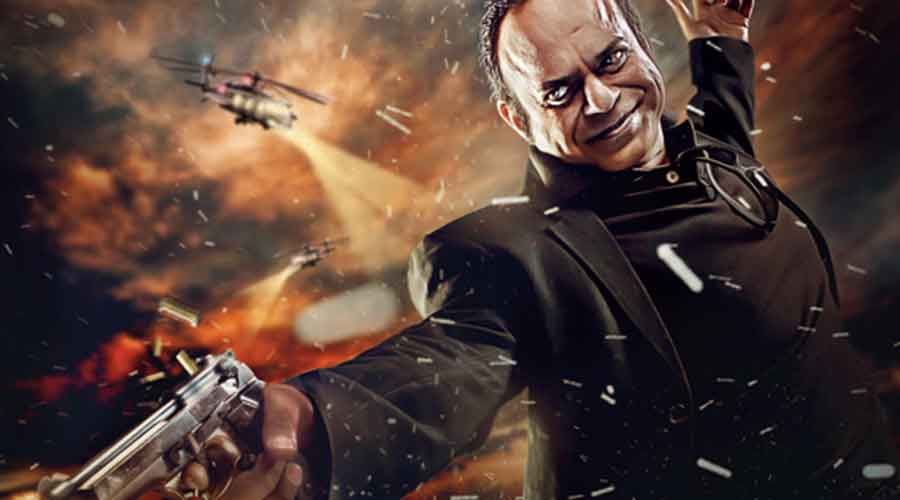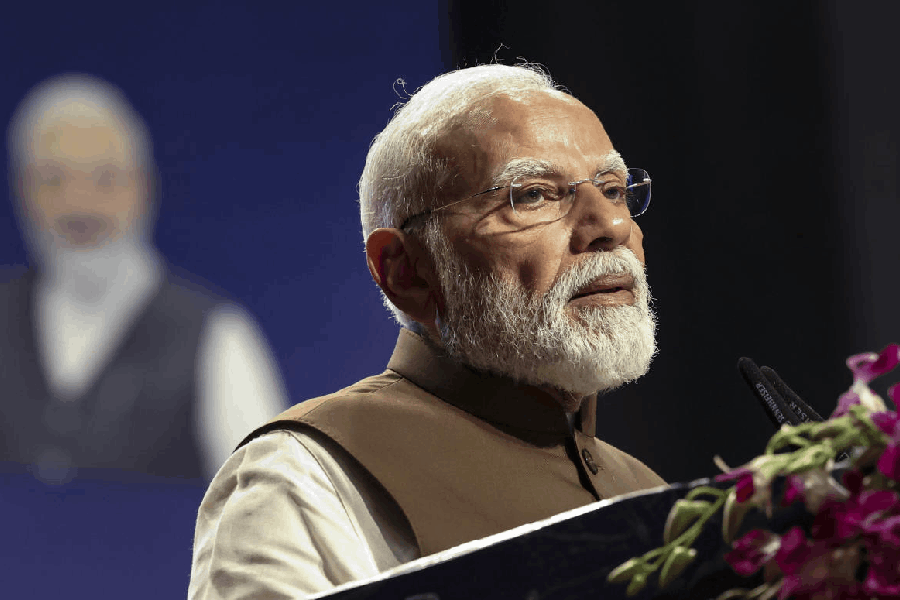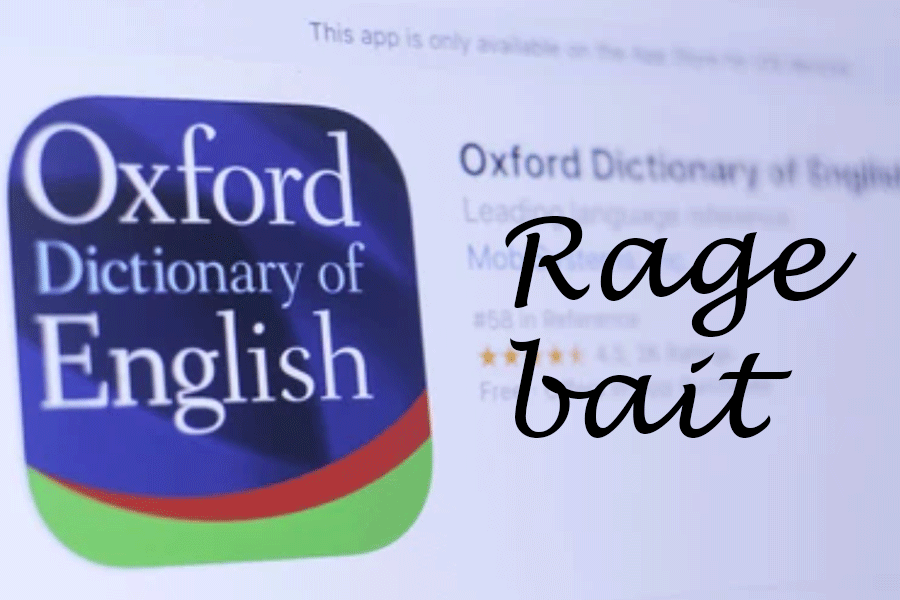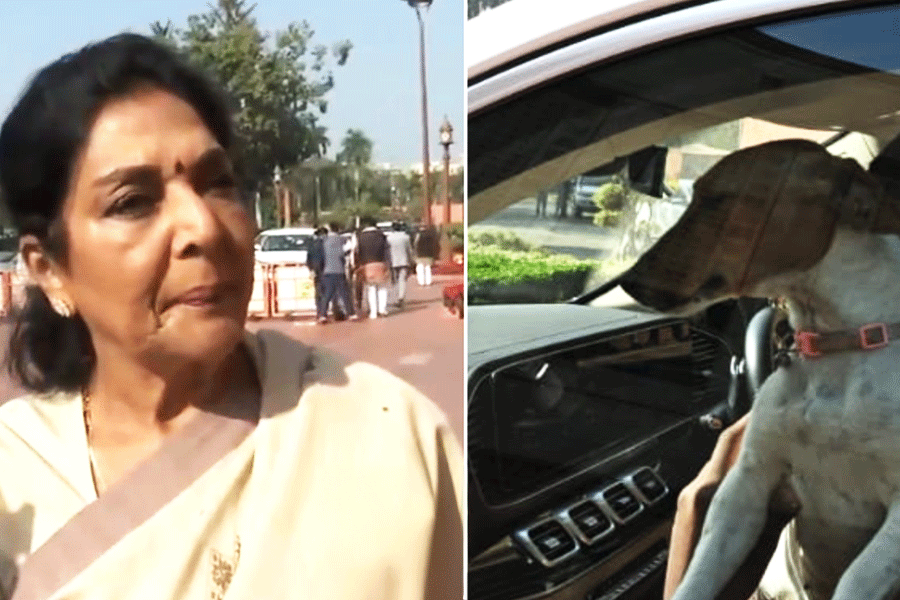One of the themes of the film is Post Hypnotic Suggestion. What fascinated you about it?
The concepts of hypnosis, mind control and memory wiping have intrigued me for many years and I came to know about Post Hypnotic Suggestion while researching these subjects. I have always wanted to work on mind control and loved the way hypnosis has been used in the master, Satyajit Ray’s film, Goopy Gyne Bagha Byne. I feel that the concept of ‘Mogoj Dholai’ or brainwashing is more relevant today than ever before. I got fascinated by Post Hypnotic Suggestion when I came to know that different companies used to incorporate this concept in their advertising strategies so as to influence consumers subconsciously to make them buy specific products. I also found out that many organisations have experimented on this concept. Elements of this have been used in the elections of different countries too.
Your first film K: Secret Eye is multilayered, complex and quite ambitious in scope. Why go for this subject as your first film?
Just like most other first-time filmmakers, I wanted to make a strong impact with my debut film and was highly passionate about making K (2017), to the point of being impractical. Even today, it is very difficult to get funding for such an out-of-the-box film. Thankfully, I found producers like Santanu Chakraborty, Sridip Adhikary and Chinmoy Pal who were willing to take the risk. I wanted to make a really larger-than-life, unique detective film, which would not only be a back-handed tribute to Bengali detective films and fiction, but will also invert the tropes common to the genre. In retrospect, I feel, the film’s second half was too complex and had more layers than needed.
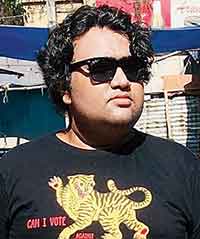
Abhirup Ghosh
Why not settle for something more toned down, and simple, within a limited budget for your first film?
At that point of time, the socio-political environment all around was bothering me and I wanted to say certain things about the state of things. I really wanted to tell people that our views and ideas are being influenced through aggressive yet indirect marketing. K was the perfect opportunity to express myself and try to send my message across through entertainment. Hence, I chose to make this film. At the time of release, some audiences felt that the film’s concept was far-fetched and unrealistic. However,
it is widely known now that consumer data and algorithms are used in compliance with different social media-based marketing strategies to influence specific reactions and purchasing decisions of consumers. Facebook has been investigated over data sharing with tech firms. People who are watching the film now are appreciating it and feel that it was ahead of its time.
You had PHS and a horror story angle of delivering electronic signals through phone calls that induce hypnosis, chanting and finally killing. You had the premise. Now, to address these issues, did you then have the detective to explore it? Was the detective the last element of your story or the first?
The detective was the last element. Initially, K was supposed to be a zombie or horror film in which I wanted to depict people turning into killing machines under mind control. However, the concept of PHS seemed more effective as a climactic reveal or a last-moment twist, hence I incorporated a detective into the plot. I wanted the film to feel like a first-person shooter video game, where audiences can be in the shoes of the protagonist and unravel the different layers of the mystery from K’s point of view. This helped create a direct connection between audiences and the world of the film.
Tell us about detective K and how did you want to present him to the audience?
I wanted K to be a grey character who had questionable ethics. I wanted him to be unlike any other Bengali detective and I intended to twist the tropes. While other detectives are usually not keen on calling themselves ‘detectives’ and prefer to be known as ‘truth seekers,’ K is unabashedly a private investigator. Also, he loves to make money by using his deduction skills. He is a bit of a characterless pervert too and does not mind double crossing his clients. Rudranil Ghosh has portrayed the character beautifully and truly humanised K. He is the heart and soul of the film and has brought out the different shades of the character perfectly.
How did you go about the casting?
I needed an actor who had tremendous range to play K. Rudranil Ghosh was perfect for the role as he has the rare ability to switch from being funny to intense to tragic in an instant. While writing the script, I kept envisioning him as K. Thankfully, he liked the script and gave his all to the film. For Sam, I needed someone larger than life with a quirky sense of humour. Rajatava Dutta felt perfect as I had watched him bring multiple layers to even the most one-dimensional negative characters one can imagine. For the female lead, I needed someone new with an air of innocence as I did not want audiences to suspect the character Nilanjana even for a second. I needed an actor who could pull off two different looks effectively. Debasmita fit the bill perfectly.
Did something like Project Morpheus actually exist anywhere?
There are reports and conspiracy theories about different government bodies running numerous mind control experiments all around the world. Reports suggest that even Nazi scientists used to experiment with potential mind control technologies in concentration camps.
We see people participating in experiments suffering brain damage. What was the genesis behind this one?
This element stemmed from incidents that happened during the Second World War. Nazi doctors and scientists used the prisoners of concentration camps as test subjects for different kinds of research. Many of these tests caused immense pain and suffering to the subjects, and in many cases, led to fatalities or lifelong deformities.
When you look back at the film now, would you do certain things differently? How would you improve on it?
I would have shot the film differently, ideally, with a better camera. I would have made the production design and lighting better too. Also, I would listen less to expert opinions of seniors and simply listen to my instincts and gut feeling.
What were the lessons learnt from your first directorial venture?
K has been the single biggest learning experience of my life. It has not only taught me about film-making, but also given me priceless life lessons. The most important thing I have learnt is that no one knows more about your film than you do. So, it’s important to follow your vision strongly.
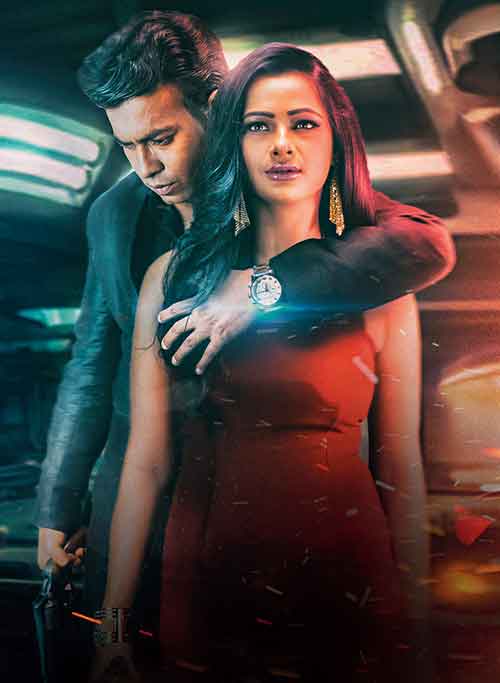
Rudranil Ghosh and Debasmita
What were some of the toughest scenes to shoot?
The toughest scene to shoot was the climax action where K kills a group of people effortlessly. We were extremely strapped for time and had to finish the shoot within 5pm as it was a daylight scene. The entire team worked under immense pressure. Another major challenge was to shoot the scene right before the interval where K finds Nilanjana in an under-construction building. We shot on the 16th floor of the building in an extremely dangerous environment. Lastly, the entire sequence where Rajatava Dutta explains the details of Project Morpheus in his headquarters was extremely challenging to shoot as it involved a lot of VFX work.
After watching this film, we did not feel like taking calls from unknown numbers! Did you get similar feedback?
The film has thankfully made a lot of audiences think about the possible use of Post Hypnotic Suggestion in their day-to-day lives. A lot of audiences have begun to question different indirect social media marketing strategies implemented to influence specific reactions or purchasing decisions. I have received a lot of appreciative feedback in recent times and am pleasantly surprised to see so many people getting my point and agreeing with me. With so much being said about fake news and false information being spread through social media and WhatsApp for political propaganda, the film and its message is more relevant than ever before. I hope more people see it.
K: Secret Eye is streaming on Amazon Prime Video

